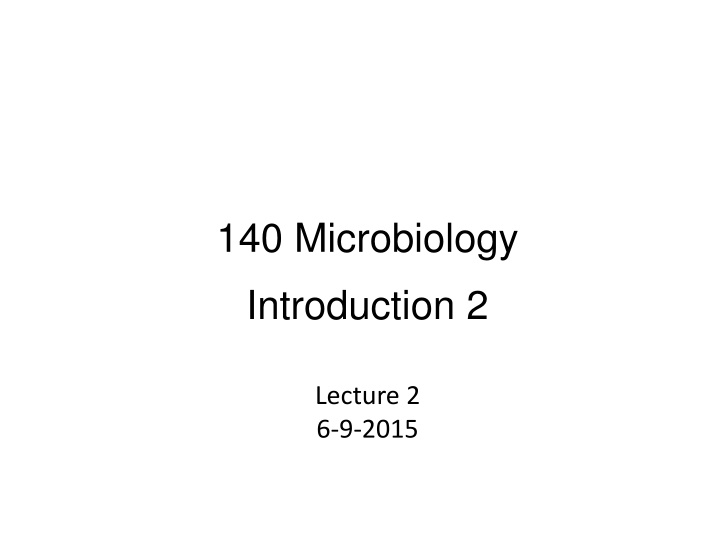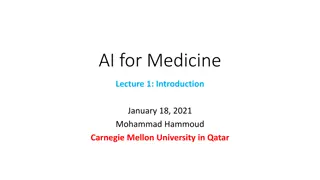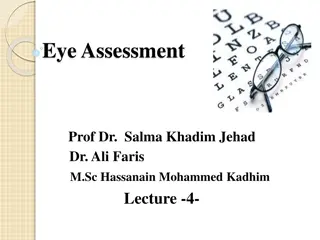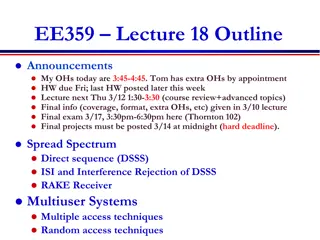
The Diverse Applications of Microbiology
Explore the wide scope of microbiology, including its impact on medicine, agriculture, food science, ecology, genetics, biochemistry, immunology, and more. Discover the roles of medical microbiology, agricultural microbiology, food and dairy microbiology, industrial microbiology, genetic engineering, taxonomy of microorganisms, and the classification system based on the three domains of life.
Download Presentation

Please find below an Image/Link to download the presentation.
The content on the website is provided AS IS for your information and personal use only. It may not be sold, licensed, or shared on other websites without obtaining consent from the author. If you encounter any issues during the download, it is possible that the publisher has removed the file from their server.
You are allowed to download the files provided on this website for personal or commercial use, subject to the condition that they are used lawfully. All files are the property of their respective owners.
The content on the website is provided AS IS for your information and personal use only. It may not be sold, licensed, or shared on other websites without obtaining consent from the author.
E N D
Presentation Transcript
140 Microbiology Introduction 2 Lecture 2 6-9-2015
Scope of Microbiology: Microbiology has an impact on medicine, agriculture, food science, ecology, genetics, biochemistry, immunology, and many other fields.
Medical Microbiology: Deals with diseases of humans and animals; identify and how to eliminate agents causing infectious diseases. Agricultural Microbiology: Impact of microorganisms on agriculture; combat plant diseases that attack important food crops.
Food and Dairy Microbiology: Prevent microbial spoilage of food & transmission of food-borne diseases (e.g. salmonellosis); use microorganisms to make food such as cheeses, yogurts, pickles, beer, etc.
Industrial Microbiology: Using microorganisms to make products such as antibiotics, vaccines, steroids, alcohols & other solvents, vitamins, amino acids, enzymes, etc.
Genetic Engineering: Engineered microorganisms used to make hormones, antibiotics, vaccines and other products.
Taxonomy of microorganisms Taxonomic categories Life Domain Kingdom Phylum Class Order Family Genus Species
Classification of microorganism The Domain system was developed by Dr. Woese. The basis of the Domain system is the rRNA sequence information.
This classification depends on dividing the living Organisms into 3 Domains (1978 Carl Woese) 1. Bacteria Unicellular prokaryotes with cell wall containing peptidoglycan 2. Archaea Unicellular prokaryotes with no peptodoglycan in cell wall
3. Eukarya Protista Fungi Plantae Animalia
Domain: Archaea Prokaryotic Lack peptidoglycan Often live in extreme environments Not known to cause disease in humans or animals Had been considered bacteria until examination of their unique rRNA sequences.
-Includes: Methanogens Extreme halophiles Extreme thermophiles
To Study microorganism 1- Microscope, simple microscope, compound microscope, EM 2- Centrifugation 3- Filtration: Membrane filter, Chamberland filter, Berkefeld filter. 4- Staining: simple stain, complex stain
Complex Stain Simple Stain Special Stain Differential Stain Gram Stain Capsule Stain Crystal violet Methylene Blue Malachite green Safranin Endospore Stain (Schaeffer-Fulton endospore Stain) Acid-Fast Stain Flagella Stain






















